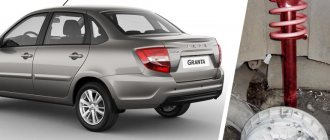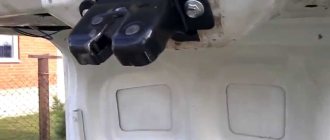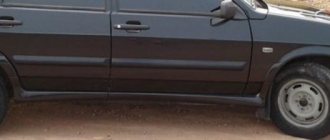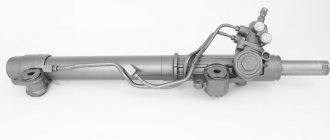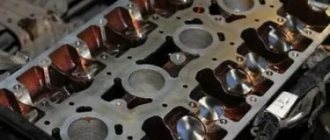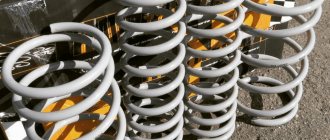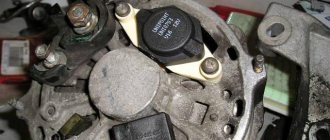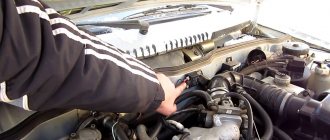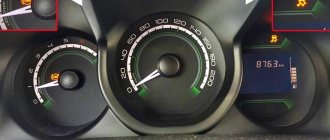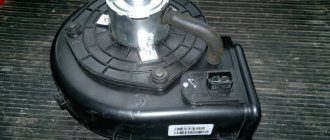Newbie
Veteran
Elite
Beginning
Elite
Please tell me what this could be: at a low speed (very low) you are rolling, and from behind on the left there is either a knock, or something touches or shuffles. And quite loudly. When I'm driving slowly, a man walks behind me and listens. He says that yes, somewhere in the area of the rear left wheel, there is a feeling that this is connected with the wheel itself. You can hear it great from outside. It doesn't depend on bumps and other things. I went out of town today. I went there and there was nothing like that. But I was driving there at normal speed, maybe that’s why I didn’t hear it. Appeared on the way back. At first I couldn’t identify the pattern. You can drive for a long time, even over bumps - everything is quiet. And then suddenly, out of the blue, on a flat road, it starts. Then it passes, and again you drive for a long time in silence. And then, when we were already approaching the parking lot, I drove very slowly, and then it started again. Even when you're barely rolling. Today, outside the city, I had to drive a little along ruts and splattered my bottom on the snow. But it doesn’t seem to be much, nothing serious. Could something have shifted there (bent, come off) because of this? I think it's unlikely. Also today I started it for the first time after these severe frosts that we had for several days. I didn’t touch it in cold weather. I shook the pipe, it seemed to be firmly seated, I shined the light as far as I could, I examined it, it seemed like nothing was visible, and there was nothing superfluous either. But still the feeling is connected with the wheel itself. Has anyone had anything similar? What could it be?
FakeHeader
Comments 10
In my case, the knocking from behind on a rough road was due to a fallen trunk ventilation valve, which was stuck between the bumper and the body.
1) My silencer was knocking in the last suspension rubber band, which was cured by replacement. 2) The knock was due to a weakened clamp for the handbrake cable in the rear beam - it was cured, I bent it and put an elastic band on it. 3) Trunk lock - adjusted, put an elastic band under the loop and unscrewed the rubber bumpers more. 4) there is something else rattling slightly, I think the pads are in the drums. I still don’t know where to dig myself.
For me it turned out that I just tapped the trunk lid lock on the hinge in the closed position, rewound the bracket with electrical tape and unscrewed the stop rubber bands on the lid more.
For me it turned out that I just tapped the trunk lid lock on the hinge in the closed position, rewound the bracket with electrical tape and unscrewed the stop rubber bands on the lid more.
Exactly. Now I was driving, turned onto the gravel road and opened the trunk with the button. The knock is gone. Now I will eliminate it. Thanks to all.
It was the same bullshit. I unscrewed the rubber bands a little, lubricated the lock and that was it.
Maybe the handbrake cable will hold it together. I haven’t tried bending the eyes
I defeated the creaking of the handbrake cable a long time ago. There's just a dull knock. It's as if something in the trunk is moving and knocking. On the previous Mazda it was similar, when the upper mount of the strut became loose. But everything is fine here. I'm starting to complain about the ventilation valve under the bumper. I read that it often flies out and rattles. It's just hard to get to it. Maybe someone else can tell me something. If not, you'll have to remove the bumper...
Other reasons
If diagnostics have been started and no obvious problems have been identified, you can pay attention to the following:
- A brake caliper is an element of the brake system, which, when the pedal is pressed under the influence of the created pressure in the brake hydraulic system (mechanical and electronic are quite rare), compresses the wearing pads. In some cases, misalignment is possible, due to which the pads will wear unevenly and a knock may appear during braking. You can check the caliper visually, as it should also have no defects.
- The hub or bearings are a common problem that leads to humming and knocking noises while driving. To check, the brake disc or drum must be removed. If installed bearings are severely damaged during dismantling, they spill out or have defects that can be identified visually. The bearing mounting method is pressing. That is why, when it gets wedged, the hub can wear out, as evidenced by the bearing turning. You can determine problems with the hub or bearings without dismantling work, for which you need to slightly rock the wheel to the side.
- Another sign is a loose wheel. Wheel rims need to be balanced.
Cover granta var2.indd
We check the chassis and transmission every 15 thousand kilometers.
We carry out the work on an inspection ditch or overpass.
The parts of the chassis (wheels, suspension arms, anti-roll bar, rear suspension beam, shock absorbers and suspension springs) and transmission (front wheel drive shafts) must be free of deformations, cracks and other mechanical damage that affect the shape and strength of the parts.
Hanging the front wheels one by one (while the car must be securely fixed on the support stand), we check the condition of the wheel hub bearings.
Use only factory-made support stands.
The wheel should rotate evenly by hand, without jamming or knocking.
Shock absorber
This element is a damping device. The shock absorber serves to reduce the range of vibrations of the car body. In other words, the element prevents spontaneous rocking. The work of the shock absorber is based on hydraulic resistance. Inside it there is a liquid of a certain viscosity. It moves through a special valve. Thus, the device absorbs sharp impacts while preserving vulnerable suspension parts. Therefore, the shock absorber is one of the most important components in the chassis. On our roads, this element lasts about 60-80 thousand kilometers. But this period may be shorter, even with careful driving. It is enough just to damage the protective boot, and all the dirt will accumulate in the rod seal.
The rear shock absorbers suffer the most wear because they have much longer stroke. When driving quickly through potholes, the hydraulic fluid may simply boil. This is one of the reasons why a shock absorber fails. But most often it leaks - the valve loses its tightness due to a strong breakdown or impact. As a result, the outer side of the cylinder becomes coated with an oily liquid. How to determine that this element has failed? It’s very simple - you will hear a characteristic knock in the suspension of the Lada Granta. Moreover, it is clearly visible in the cabin. From the outside, you can hardly hear a broken shock absorber. This knock is so strong that even good music cannot interrupt it. You will hear a broken shock absorber immediately.
Also note that the damping element changes in pairs. That is, in the event of a breakdown of the rear left shock absorber, the rear right shock absorber also changes. As for the front struts, they are more durable. Often they are replaced already assembled with a spring, since they fail no earlier than after 150-200 thousand kilometers.
Granta 39 7 new size
The suspension springs must not be damaged. Tearing, cracking and severe deformation of rubber bushings, cushions and compression buffers of shock absorbers are unacceptable.
Liquid leakage from shock absorbers is not allowed. A slight “fogging” of the shock absorber in its upper part, while maintaining the characteristics, is not a malfunction.
If the rubber element of the upper support of the front suspension telescopic strut settles or is destroyed, the support must be replaced.
Probable sources of knocking
Shock absorbers - source of noise
The rear suspension includes the following components:
- Guide structure.
- Shock absorbers.
- Twisted coil springs.
- Cups and mounting brackets, as well as rubber bushings.
There really is something to cause a knock in the rear suspension. Therefore, if knocking is a frequent occurrence, you need to spend 1-2 hours and diagnose the rear suspension of your own car. Of course, you can contact a service station for specialist help, or do it at home, thereby saving your time and money.
A trip to the dealer
The struts weren't leaking yet, but I was getting pretty tired of the knocking noise, so I decided to go to a car dealership. I made an appointment for repairs a week in advance; I live in another city 300 km from the salon. At the same time, I decided to diagnose the entire suspension and replace what was needed.
I arrived a little earlier than expected and approached the repairman. I thought they would accept the car earlier, but there was no free space, so I had to wait.
I've had repairs done at a dealer before and I liked the attitude. Polite service, conscientious craftsmen. Worn parts are returned. During renovations, you can come in and see how the work is progressing.
Diagnostics
The Lada Granta was driven into the repair bay and raised on a lift. I explained the problems and said that something was knocking in front.
I forgot to say that before the lift the car was checked at a stand. The front end was subjected to vibration and the operation of the struts was checked. It turned out that they were normal.
The mechanic advised not to change the racks, since by all indications they were in good working order. I checked the chassis and suspension, tapped the front brake calipers - they made a metallic ringing sound. I said the knocking noise when driving was similar.
Creaks and knocks in the front suspension of the Lada Granta: causes and diagnostics
Comfort when driving a Lada Granta car consists of many factors, one of which is the operation of the front suspension. Knocking, noise, and “breakdowns” of the suspension also affect traffic safety, so timely diagnosis of breakdowns of this unit is simply necessary. It is better to carry it out at a service center, but some faults can be identified yourself.
What did you decide to repair?
Together with a mechanic and a repairman, we decided that the following needed to be changed and repaired:
- Replace the rubber bands of the levers (daisies).
- Replace the stabilizer struts (in common parlance, eggs).
- Lubricate the brake caliper guides.
- Replace brake linings and pads on all 4 wheels. Although the rear ones were not too worn, I decided to change them.
- The handbrake cables were rotted at the bends near the rear wheels. The braid broke, water got in, and everything rusted. As a result, the right rear wheel was not stopped by the handbrake. Therefore, it was decided to change both cables.
- We also decided to replace the two outer CV joints. I knew this even at home, since a characteristic crunch was heard when turning.
The master calculated the cost of spare parts and labor. It turned out that for cars older than 6 years there is a 20% discount on spare parts. Therefore, we calculated 12,566 rubles for everything.
I left the car at the dealership and drove into town. They said it would take about 4 hours to get it repaired by the dealer. Later they called me and said that the rear brake drums were very scuffed. They asked whether we would change it or not, to which I agreed to replace it.
Problems with the rack supports
The upper parts of the supports suffer the most when driving on uneven roads. In this case, most often it is necessary to replace the rubber base, which is necessary to dampen vibration and the resulting excess noise. The sound occurs as a result of loss of flexibility and severe wear of the base.
Often, when sounds appear, the driver begins to manually sort out the entire front suspension, spending a lot of time and money on new spare parts, but the cause of the noise does not disappear. You can identify the presence of a problem in the rubber base by simply measuring the gap distance between the support structure and the plastic stop. On average, the value of this parameter should be 8-10 mm.
To replace the rubberized base, contact a car service center - here they will carefully remove the support and install a new layer of rubber. In this case, noise and vibration will go away immediately, and the new “layer” will last another 20-40 thousand km.
Let's summarize
High-quality brake operation in a car is one of the most important features of a safe trip. If the operation of the machine causes certain difficulties or discomfort in terms of braking, you should immediately contact a service station and solve the problem. Otherwise, you may encounter unpleasant situations when braking turns out to be ineffective at a difficult moment and fails to provide the necessary individual performance. Taking into account the importance of the braking system for safety, it is better not to joke with this unit and do all the work in a timely manner. In this case, creaking and grinding noises may appear if you do not comply with the manufacturer’s fundamental requirements for car maintenance.
The usual replacement of pads at the very beginning of squeaking can save you money, time, and also ensure your safety. To avoid problems one hundred percent, it’s time to do an inspection and respond to all nasty manifestations. The behavior of the car, as well as the sound effects of problems, can also become a fundamental point in diagnosing the car. Often these particular moments are a fundamental harbinger of problems. What do you do if the car starts making any unnatural sounds?
Source: avto-flot.ru
The grinding noise constantly intensifies and is quite sharp.
One of the most common situations in which you will need to use the help of professionals at a service station is increased grinding or a sharp, powerful sound of alloy rubbing against alloy. Most likely, the block is one hundred percent worn out; you continue to brake with the sole of the block, which is made of hard alloy. If you do not pay attention to this problem in time, the brake disc may fail and require replacement. In this case, repairs will be three times more expensive, so it is better to immediately find all the possible problems and tasks that caused the grinding noise when braking. Namely, to diagnose this problem it is enough to perform the following processes:
- determine from which side the grinding sound is heard, this will help you halve the amount of work for diagnosis;
- remove the wheel that, according to your guesses, makes unpleasant sounds during braking;
- inspect the exposed brake disc for grooves, chips and other problems with the working surface;
- look at the remaining layer of the brake pads, determine the degree of wear and the need for replacement;
- also inspect the second wheel on this side, and ideally inspect the brake system on all wheels;
- determine the likely problems that could lead to the squeak and consult with specialists.
Often this will help you find the cause of the squeak when braking for free, but disassembling the brake system and doing repair work on your own is not always appropriate. You will be able to use the services of professionals and guarantee the normal operation of the brake system. In general, a situation is entirely possible when visually all the braking systems look fully operational, but the grinding noise is still present. Then see if the car’s behavior has changed during braking. If there are configurations, you will have to pay more attention to this problem. If there are no configurations, you can continue to operate the car until the grinding noise intensifies and gives certain clues.
Steering tips
Tie rod ends need to be replaced when they wear out, and the first sign of wear is the appearance of a knocking sound when the car moves over bumps and holes.
We will also carry out diagnostics using the example of VAZ classic cars, but the methods shown below may be suitable for other brands of cars.
On VAZ classic cars, internal and external tie rod ends are structurally provided and all of them need to be checked.
It is also important to understand how these steering elements are designed and how they work, so it will be easier to understand what you are doing
There is no need to jack up the car or use a pry bar; use only your hands for diagnostics.
The first thing you need to do is get to the steering rods; to do this, you can drive the car onto an overpass, a pit, or use a lift, if there is one.
Pay attention to the condition of the anthers; if they are torn, then this points to the tips as one of the reasons for the source of the knocking. Grasp the tie rod of the steering tips and forcefully, maybe jerkily, move it up and down, but it should not wobble or make sounds
Grasp the tie rod of the steering tips and with force, you can jerk it, move it up and down, but it should not wobble or make sounds.
If it openly dangles, it is most likely the cause of the knocking in the front suspension.
Do not confuse knocking with a spring movement, which is obtained due to springs inserted into the steering tip (see the device above).
On classic VAZ cars, for example, model 2106, the inner tip is attached to the steering pendulum, which can also play, namely, its bipod can hang on the bushings.
Therefore, you need to grab the bipod with both hands and use the same up and down movements to diagnose the pendulum.
Also, on the side of the steering gearbox, there may be play in the pair of the unit itself, and you will be sinning on the steering tip, which sits on the bipod of the gearbox.
As for other VAZ cars, for example, 2110 - 2115, the steering design there is much simpler, which means diagnosing the condition of the tie rod ends will also be easier.
For example, remove the front left wheel and turn the steering wheel to the right until it stops.
Grasp the caliper with your left hand and the brake discs with your left hand. When making sudden movements away from you or towards you, you can see whether there is play in the steering tip or not.
Wheel bearing
This element serves for uniform rotation of the car wheels. There are 4 such bearings on the Grant. On average, their resource is 100 thousand kilometers. What are the signs of a problem? The main symptom is a characteristic hum when moving. It may get worse as the car turns. The hum can occur on either side of the car, depending on which bearing has fallen apart. The entire assembly is replaced with a new one, and it doesn’t matter whether the Lada Granta’s rear suspension or the front one. It is pressed out using a puller with special paws. Pressing takes place in a vice. It is important to maintain alignment when pressing. If a bearing is installed crookedly, it will be subjected to high loads and may fall apart after just a thousand kilometers.
The main enemy of a bearing is moisture. Therefore, during installation it is so important to ensure the element is sealed. Some manufacturers cover it with a special cap (it is put on the fastening nut), which will prevent salt, water and other reagents from getting inside. But as soon as dust penetrates the bearing, the latter begins to operate outside of its temperature range. As a result, the lubricant is washed away, and the dirt acts as an abrasive. Untimely replacement of this element can provoke a sudden wheel wedge, which is fraught with consequences.
Problems with the rack supports
The upper parts of the supports suffer the most when driving on uneven roads. In this case, most often it is necessary to replace the rubber base, which is necessary to dampen vibration and the resulting excess noise. The sound occurs as a result of loss of flexibility and severe wear of the base.
Often, when sounds appear, the driver begins to manually sort out the entire front suspension, spending a lot of time and money on new spare parts, but the cause of the noise does not disappear. You can identify the presence of a problem in the rubber base by simply measuring the gap distance between the support structure and the plastic stop. On average, the value of this parameter should be 8-10 mm.
To replace the rubberized base, contact a car service center - here they will carefully remove the support and install a new layer of rubber. In this case, noise and vibration will go away immediately, and the new “layer” will last another 20-40 thousand km.
Lada Granta suspension device
Front suspension device (diagram)
This car uses an independent suspension with one lever, to which the lower part of the steering knuckle is screwed. Its top is mounted to the shock absorber strut, the operation of which differs from many similar units on domestic cars. When you turn the steering wheel, the fist with the shock absorber strut and the spring placed on it rotates. The shock absorber auger, screwed through a bearing to the upper strut support, remains stationary.
The ball joint provides flexible articulation between the steering knuckle and the suspension arm. The camber angle is adjusted traditionally for front-wheel drive versions of VAZ cars - with a nut with an eccentric on the main shock absorber strut, at the point where it connects with the steering knuckle. The suspension is kept from directional fluctuations by a common anti-roll bar and braces on both sides of the suspension.
Details in the photo
All suspension elements are in the photo below
